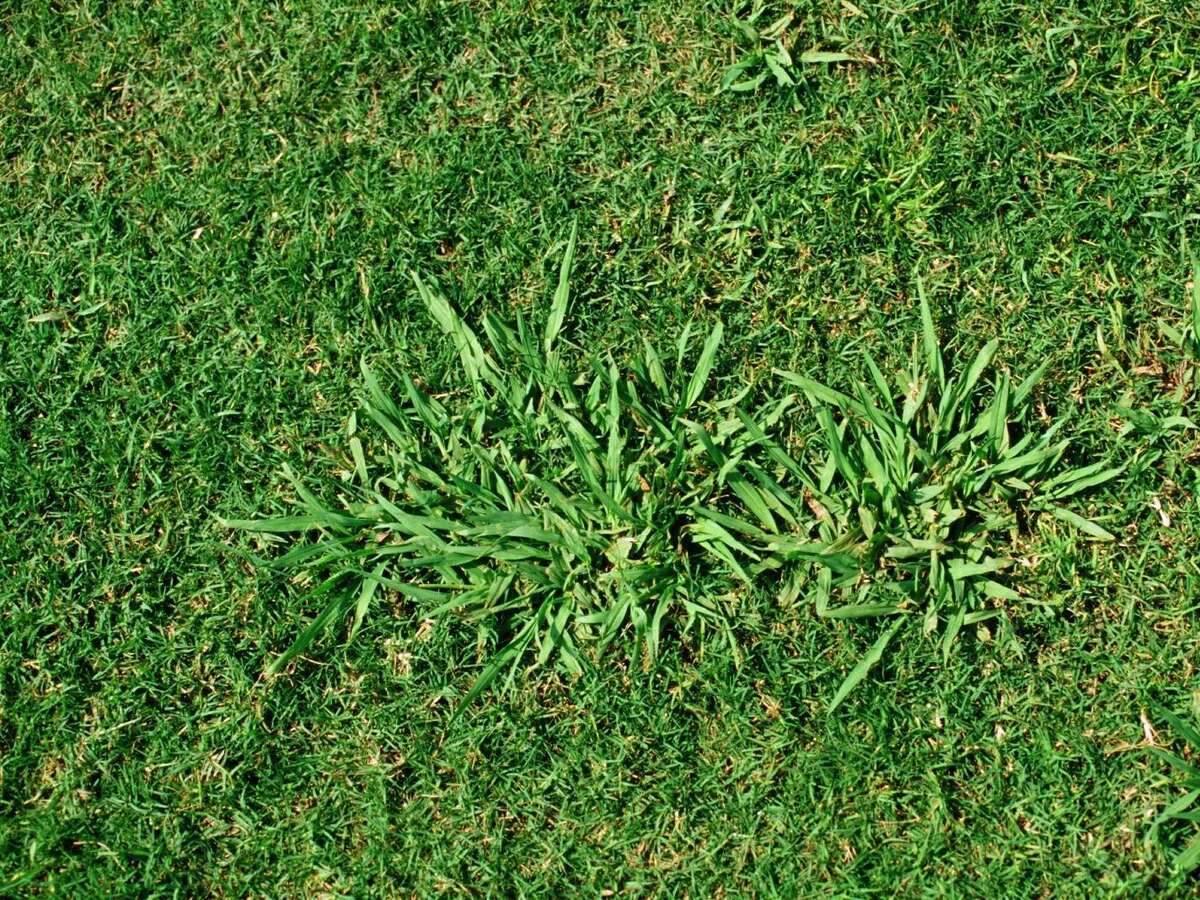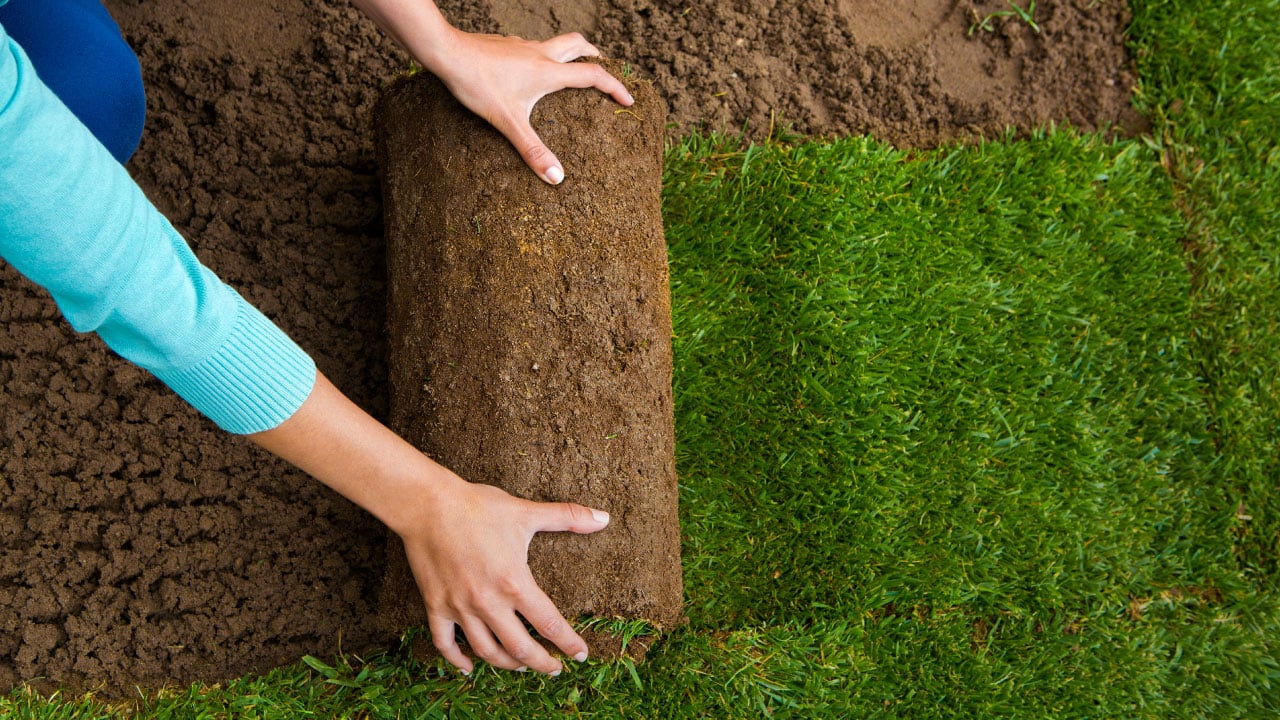Home>Gardening & Outdoor>Landscaping Ideas>When To Plant Grass In Houston


Landscaping Ideas
When To Plant Grass In Houston
Modified: October 19, 2024
Looking for landscaping ideas in Houston? Find out the best times to plant grass and create a lush, green lawn with our expert tips and advice.
(Many of the links in this article redirect to a specific reviewed product. Your purchase of these products through affiliate links helps to generate commission for Storables.com, at no extra cost. Learn more)
Introduction
So, you've decided to enhance your outdoor space in Houston by planting some luscious green grass. That's a fantastic idea! A well-maintained lawn not only adds to the aesthetic appeal of your property but also provides a comfortable space for relaxation and recreation. However, achieving that perfect lawn in Houston requires careful consideration of the local climate, suitable grass types, and the optimal time for planting.
In this comprehensive guide, we'll delve into the intricacies of planting grass in Houston, offering valuable insights into the best practices for ensuring a thriving lawn. From understanding the unique climate of Houston to identifying the most suitable grass varieties and mastering the art of soil preparation and maintenance, we've got you covered. By the end of this journey, you'll be equipped with the knowledge and confidence to transform your outdoor space into a verdant oasis that flourishes in Houston's diverse weather conditions.
Let's embark on this green-fingered adventure together, and uncover the secrets to planting and maintaining a stunning lawn in the vibrant city of Houston.
Key Takeaways:
- Plant warm-season grass like Bermuda, St. Augustine, and Zoysia in Houston during spring for rapid growth and fall for cooler temperatures, ensuring a thriving lawn that withstands the city’s climate.
- Prepare the soil with aeration, organic matter, and balanced fertilizer, then maintain the lawn with proper watering, mowing, and pest control to nurture a lush and resilient grass in Houston’s diverse weather.
Read more: When To Seed Wildflower In Houston
Understanding the Climate in Houston
Before diving into the specifics of planting grass, it’s crucial to grasp the unique climate of Houston. Known for its subtropical climate, Houston experiences hot and humid summers, mild winters, and ample rainfall throughout the year. The city’s proximity to the Gulf of Mexico influences its weather patterns, resulting in high levels of humidity and occasional tropical storms.
During the summer months, temperatures in Houston can soar, often reaching the high 90s and occasionally surpassing 100°F. The humidity adds to the discomfort, making it essential to select grass varieties that can withstand these challenging conditions. Additionally, the mild winter season in Houston brings occasional frosts, necessitating grass types that are resilient to both heat and cold.
Understanding the climate is pivotal in selecting the most suitable grass for your lawn, as it directly impacts the grass’s ability to thrive in Houston’s weather conditions. With this knowledge in mind, let’s explore the optimal times for planting grass in this dynamic climate.
Best Times to Plant Grass in Houston
Choosing the right time to plant grass is paramount to its successful establishment and long-term health. In Houston, the best times for planting grass largely depend on the type of grass you intend to sow and the prevailing weather conditions. Generally, the prime periods for grass planting in Houston are during the spring and fall seasons.
Spring, specifically the months of March through May, offers favorable conditions for planting warm-season grasses such as Bermuda, St. Augustine, and Zoysia. During this time, the soil temperature begins to rise, promoting rapid germination and root development. Additionally, the increased sunlight and moderate rainfall in spring create an ideal environment for the establishment of new grass seed or sod.
On the other hand, fall, spanning from September to November, presents another opportune window for grass planting in Houston. The cooler temperatures during this season reduce the stress on newly planted grass, while the soil remains warm enough to support robust root growth. Planting cool-season grasses like fescue and ryegrass is particularly advantageous during this period, as they thrive in the milder temperatures and ample rainfall that characterize Houston’s fall climate.
It’s important to note that the timing of grass planting should align with the specific growth characteristics and optimal planting periods of the chosen grass species. By strategically planning your grass planting endeavors to coincide with the spring and fall seasons, you can maximize the chances of establishing a resilient and vibrant lawn that flourishes in Houston’s climatic nuances.
Now that we’ve identified the best times for planting grass in Houston, let’s explore the various grass types that are well-suited for this dynamic environment.
Types of Grass Suitable for Planting in Houston
When it comes to selecting the right grass for your Houston lawn, it’s essential to consider the city’s climate and environmental factors. Several grass varieties have proven to thrive in Houston’s subtropical climate, offering resilience against the region’s heat, humidity, and occasional cold spells. Here are some grass types that are well-suited for planting in Houston:
- Bermuda Grass: This warm-season grass variety is a popular choice for Houston lawns due to its exceptional heat tolerance and rapid growth. With proper maintenance, Bermuda grass forms a dense, lush carpet that can withstand heavy foot traffic and recovers quickly from damage.
- St. Augustine Grass: Known for its ability to thrive in the shade and tolerate Houston’s humid conditions, St. Augustine grass is a top contender for lawns in the area. It boasts a vibrant green hue and provides excellent coverage, making it an ideal choice for residential landscapes.
- Zoysia Grass: Recognized for its drought tolerance and resilience to foot traffic, Zoysia grass is well-adapted to Houston’s climate. This grass type exhibits a fine texture and impressive heat resistance, making it a sought-after option for lawns that require durability and visual appeal.
- Fescue Grass: As a cool-season grass variety, fescue thrives in the milder temperatures of Houston’s fall and winter seasons. Its ability to maintain a lush, green appearance during cooler months makes it an attractive choice for homeowners seeking year-round vibrancy in their lawns.
- Ryegrass: Often used for overseeding warm-season lawns in Houston, ryegrass contributes to the visual appeal of lawns during the cooler months. Its quick germination and lush, emerald green blades enhance the aesthetic appeal of lawns, providing a striking contrast to warm-season grasses.
By carefully selecting a grass type that aligns with your lawn’s specific requirements and the prevailing climate in Houston, you can set the stage for a thriving and visually captivating outdoor space. With the grass type chosen, the next crucial step in ensuring a successful lawn is preparing the soil for planting.
The best time to plant grass in Houston is during the spring or fall when the temperatures are cooler and there is more moisture in the soil. This will give the grass the best chance to establish strong roots before the heat of summer or the cold of winter.
Preparing the Soil for Planting
Establishing a healthy and resilient lawn in Houston begins with thorough soil preparation. The quality of the soil directly influences the growth and vitality of the grass, making it essential to create an optimal environment for root development and nutrient uptake. Here are the key steps to prepare the soil for planting grass in Houston:
- Soil Testing: Before embarking on any soil preparation activities, conducting a soil test is highly recommended. A comprehensive soil analysis provides valuable insights into the soil’s pH levels, nutrient content, and composition, enabling you to make informed decisions regarding soil amendments and fertilization.
- Soil Aeration: Aerating the soil helps alleviate compaction and promotes better air and water penetration, fostering a conducive environment for root growth. In Houston, where heavy clay soils are prevalent, core aeration is particularly beneficial in enhancing drainage and facilitating the movement of essential nutrients to the grass roots.
- Adding Organic Matter: Incorporating organic matter such as compost or well-rotted manure into the soil can significantly improve its structure, moisture retention, and nutrient content. This step is especially advantageous for Houston’s soils, as it enhances their ability to support healthy grass growth and withstand the rigors of the local climate.
- Leveling the Soil: Ensuring a uniform and level soil surface is crucial for achieving an even and aesthetically pleasing lawn. By filling in low spots and grading the soil to eliminate uneven areas, you create an ideal foundation for laying sod or sowing grass seed.
- Applying Fertilizer: Based on the results of the soil test, applying a balanced fertilizer tailored to the specific nutrient requirements of the chosen grass type is essential. This promotes healthy root development and provides the grass with the essential nutrients it needs to thrive in Houston’s climate.
By meticulously preparing the soil according to these guidelines, you set the stage for successful grass establishment and long-term vitality. With the soil primed for planting, the next phase involves nurturing the newly planted grass to ensure its healthy growth and resilience in Houston’s diverse weather conditions.
Read more: What Kind Of Grass Grows In Houston
Maintaining Your Lawn After Planting
Once you’ve planted the grass and witnessed the initial stages of growth, it’s crucial to provide ongoing care and maintenance to nurture a thriving and vibrant lawn in Houston. Proper maintenance practices play a pivotal role in ensuring the long-term health and resilience of the grass, allowing it to withstand the challenges posed by the city’s unique climate. Here are essential steps for maintaining your lawn after planting:
- Watering: Adequate and consistent watering is vital for the establishment of newly planted grass. In Houston’s hot and humid climate, it’s recommended to water the lawn deeply but infrequently, promoting deep root growth and drought resistance. During the hotter months, early morning or late evening watering helps minimize water loss due to evaporation.
- Mowing: Regular mowing is essential for promoting healthy growth and maintaining an aesthetically pleasing lawn. When mowing in Houston, it’s advisable to adhere to the one-third rule, ensuring that no more than one-third of the grass blade is removed in a single mowing session. Additionally, varying the mowing direction prevents soil compaction and encourages upright grass growth.
- Fertilization: Providing the grass with regular and appropriately timed fertilization supports its nutritional needs and overall vigor. Depending on the grass type, applying a balanced fertilizer in accordance with the recommended schedule helps sustain lush and resilient growth, especially in the nutrient-demanding Houston climate.
- Weed Control: Vigilant weed control is essential for preserving the integrity and visual appeal of the lawn. Regularly inspecting the grass for weeds and implementing targeted control measures, such as selective herbicides or manual removal, helps prevent invasive weeds from encroaching on the grass and competing for essential resources.
- Pest and Disease Management: Monitoring the lawn for signs of pests and diseases is crucial for early intervention and effective management. Houston’s humid climate can create favorable conditions for certain pests and diseases, making proactive surveillance and timely treatment pivotal in safeguarding the grass’s health.
By diligently adhering to these maintenance practices and tailoring them to the specific requirements of the grass type and Houston’s climate, you can foster a lush, resilient, and visually captivating lawn that thrives year-round. With proper maintenance, your lawn will become a delightful outdoor haven, enhancing the beauty of your property and providing a welcoming space for leisure and recreation.
Conclusion
Embarking on the journey of planting and nurturing a vibrant lawn in Houston is a rewarding endeavor that requires careful consideration of the city’s unique climate, suitable grass varieties, and meticulous maintenance practices. By understanding the subtropical climate of Houston and its impact on grass growth, selecting the best times for planting, and choosing appropriate grass types, you can lay the foundation for a resilient and visually appealing lawn.
Preparing the soil with precision and ensuring optimal conditions for grass establishment are pivotal steps in creating a thriving lawn that can withstand the challenges posed by Houston’s weather. Additionally, diligent post-planting maintenance, encompassing watering, mowing, fertilization, weed control, and pest management, is essential for nurturing the grass and preserving its health and vitality.
As you venture into the realm of lawn care in Houston, remember that each step, from soil preparation to ongoing maintenance, contributes to the overall well-being and beauty of your outdoor space. With the right knowledge and practices in place, you can transform your lawn into a lush and inviting oasis that flourishes amidst the diverse weather conditions of Houston.
So, roll up your sleeves, embrace the green-fingered journey, and witness your outdoor space bloom into a captivating haven that reflects the vibrancy of Houston’s landscape.
Frequently Asked Questions about When To Plant Grass In Houston
Was this page helpful?
At Storables.com, we guarantee accurate and reliable information. Our content, validated by Expert Board Contributors, is crafted following stringent Editorial Policies. We're committed to providing you with well-researched, expert-backed insights for all your informational needs.















0 thoughts on “When To Plant Grass In Houston”